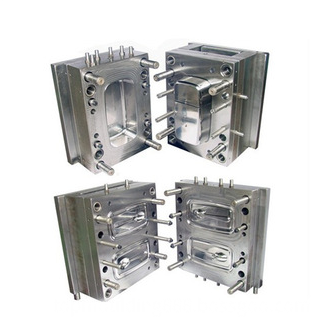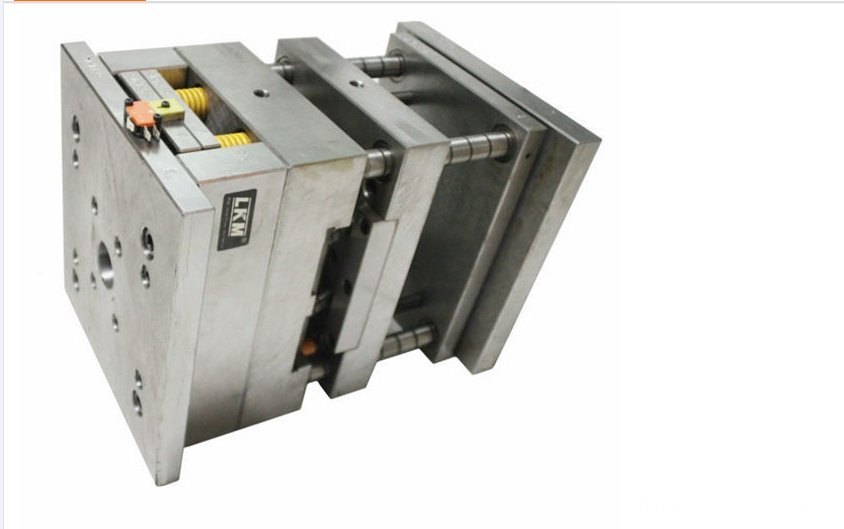I. Introduction Shaoguan lead smelter furnace using expensive blowing matte reverberatory furnace output, 90% output of blister copper, the slag contains high blister copper, antimony, lead valuable metals, set forth herein It is a test study to recover valuable metals such as copper, lead and antimony from the crude copper slag after blowing. After crushing and sieving, the crude copper slag is treated by two-stage oxidation acid leaching to produce copper sulfate, and the leaching slag is reduced and smelted to obtain a lead-bismuth multi-alloy process. After a small test and expansion test, copper sulfate of the second grade or higher can be obtained. The product and the main component are more than 80% lead-bismuth alloy. Second, the program selection The main components of the crude copper slag produced by blowing the copper in the precious lead furnace are shown in Table 1. Table 1 Main components of crude copper slag It can be seen from Table 1 that the grade of valuable metal in the crude copper slag is relatively low, and it is more difficult to use the fire treatment, and it is more suitable to treat the slag by a wet process. In the wet process, there are various options depending on the product structure. According to our research and exploratory experiments, it was decided to use oxidized acid leaching to make copper, arsenic and sodium into the liquid, and to separate As and Na from the liquid to produce copper sulfate products. Lead and bismuth in the leaching residue were reduced and smelted to lead. Niobium alloy. The test process flow is shown in Figure 1. Third, the test results and discussion (1) Acid leaching of crude copper slag The purpose of leaching is to leaching copper as much as possible, and lead and bismuth are further enriched in the slag. Figure 1 test process flow chart In the exploratory test, water leaching and acid leaching were carried out, and the leaching rate of copper was very low. During the oxidizing acid leaching process, the higher the acidity, the longer the leaching time, the higher the leaching rate of copper, but at the same time due to the end of the leaching solution. The higher the acid, the greater the neutralization dose used for neutralization and decontamination of the next step, and the greater the loss of copper. In order to make the leachate low in acidity and high in leaching rate, we finally used two-stage countercurrent oxidation acid leaching. The technical conditions for the two-stage countercurrent oxidation acid leaching are as follows: One-stage acid leaching: liquid-solid ratio 4:1, leaching temperature 70-80 ° C, leaching time: 4 h, air intake 46 L/min, initial acid concentration 40 g/L. Two-stage acid leaching: liquid-solid ratio 4:1, leaching temperature 70-80 ° C, leaching time: 8 h, air intake 46 L/min, initial acid concentration 98 g/L. According to the data in Table 2, the leaching rate of the two-stage oxidized acid immersion copper is 85.56%. Table 2 List of crude copper slag acid leaching test data Note: 1. The amount of acid immersion liquid is 1000 mL during neutralization, and the amount of liquid after neutralization is 1150 mL; 2. The liquid concentration is in g/L, and the solid is in percentage. (2) Neutralization of acid leaching solution The main purpose of neutralization is to reduce the acidity of the solution while removing impurities such as As and Fe. Cu 2 + hydrolysis pH 0 is 3.88 (t = 70 ° C), while Fe [3 +] hydrolysis pH 0 (t = 70 ° C) is 0.99, so the pH of the neutralization endpoint is controlled at 2.5 ~ 3.0, will After the acid immersion liquid is heated to 70-80 ° C, the lime milk is sprayed onto the inner wall of the beaker, and the lime milk is slowly added to neutralize. The direct yield of copper during neutralization and impurity removal was 95.3% (based on slag). (3) rinsing and dissolving of copper and copper slag after neutralization The neutralized liquid is heated to 50 ° C, and Na 2 CO 3 is added to form copper. The pH of the end point is controlled at about 5.5 to 6.0. After the end point, stirring is continued for 10 minutes to filter. The main reaction of the copper sinking process is: 2CuSO 4 +3Na 2 CO 3 +2H 2 O=Cu(OH) 2 CuCO 3 ↓+2NaHCO 3 +2Na 2 SO 4 The copper slag obtained by filtration is rinsed with water of 30 times the amount of copper in the slag for 30 minutes at 70-80 ° C. The slag after washing is dissolved in 1.8 times of concentrated H 2 SO 4 of copper, 30 times of water is stirred and dissolved for 20 minutes. can. The main reaction of the process is: During the dissolution of the copper and copper slag after neutralization, the direct yield of copper was 95.69%. (4) Concentration, crystallization and centrifugal filtration of copper sulfate solution The copper sulfate solution obtained by dissolving the copper slag is heated and evaporated to a specific gravity of 1.38 to 1.41, and then cooled and crystallized, and centrifugally filtered to obtain a second-grade copper sulfate to be filtered to ensure product quality. From the leaching of crude copper slag to the production of copper sulphate products, the total recovery of copper is 78.02%. (5) Reduction smelting of acid leaching residue It can be seen from Table 2 that the acid leaching residue contains lead and strontium and must be recycled. Initially, we explored the smelting reduction method in which to recover the lead and antimony, is about to acid leaching residue together with coke powder, soda ash and iron scrap, packed in a graphite crucible into the pit furnace smelting reduction process of the main reaction is: Main technical conditions for reduction smelting: Coke powder: 10% of slag, soda ash: 10% of slag, iron filings: 2% of slag, temperature 1150 ° C, time: 3 to 4 h. Acid leaching residue: The main components of the crude Pb-Sb alloy and the reducing slag are shown in Table 3. The yields of reduction and smelting lead were 90.1% and 81.3%, respectively. Table 3 Contents of main components of each material in reduction smelting (%) (6) Expanding the test 1, copper slag copper Each time the material was leached 5000g, the test conditions were the same as the small test, and the test data is shown in Table 4. The leaching rate of the expanded test copper was 88.2%, the total recovery rate was 81.8%, and the produced copper sulfate reached the second grade. Table 4 List of crude copper slag copper expansion test data Note: 1. When the neutralization is taken, the amount of acid immersion liquid is 3000mL, and when sinking copper, the liquid volume after neutralization is 3060mL; 2. The liquid concentration is in g/L, and the solid is in percentage. 2. Reduction smelting of acid leaching residue Each time, 900 g of the acid leaching residue of the expanded test was taken to reduce the smelting, and the conditions were the same as those of the small test, and the contents of the respective components are shown in Table 5 below. Experimental results: the direct yield of Pb was 84.2%, and the direct yield of Sb was 77.3%. Table 5 Acid leaching residue reduction smelting expansion test data Fourth, the main technical and economic indicators (1) Main technical indicators (see Table 6). Table 6 Main technical indicators (%) (2) Raw material consumption and cost settlement 1. Consumption of raw material per ton of copper sulfate (see Table 7) Table 7 Consumption per ton of copper sulfate raw materials 2. Consumption of raw materials per ton of crude Pb-Sb alloy (see Table 8) Table 8 Raw material consumption per ton of crude Pb-Sb alloy V. Conclusions and discussion The small test and the extended test show that the process of two-stage oxidation acid leaching treatment of crude copper slag and comprehensive recovery of valuable metals such as copper, lead and antimony are feasible, and copper sulfate and main components above the secondary product can be produced. 80% Pb-Sb alloy, high recovery of copper, lead and antimony. The copper content in the crude copper slag is about 0.2%, which has a high recovery value. The recovery problem needs to be further considered in the future. In addition, the reduction slag after the reduction and smelting of the acid leaching residue contains high strontium, how to change the slag type, and reduce the slag. The content and the increase of the recovery rate of hydrazine still require further experimental research.
Injection moulding or Injection molding, all the mould we made in our own house .is a manufacturing process for producing parts by injecting material into a mould. Injection moulding can be performed with a host of materials mainly including metals, (for which the process is called die-casting), glasses, elastomers, confections, and most commonly thermoplastic and thermosetting polymers. Material for the part is fed into a heated barrel, mixed, and forced into a mould cavity, where it cools and hardens to the configuration of the cavity .After a product is designed, usually by an industrial designer or an engineer, moulds are made by a mould-maker (or toolmaker) from metal, usually either steel or aluminium, and precision-machined to form the features of the desired part. Injection moulding is widely used for manufacturing a variety of parts, from the smallest components to entire body panels of cars. Advances in 3D printing technology, using photopolymers which do not melt during the injection moulding of some lower temperature thermoplastics, can be used for some simple injection moulds. We had over 20years to made inejction mould with may areas ,such as car components, home appliance, office application products, electronic products, also some precision products.
Plastic Mould Speaker,Injection Moulding Speaker,Cosmetic Box Injection Mould,Blood Glucose Meter Mould Topwell Spring Development Ltd. , http://www.topwelldesign.com![]()


![]()









